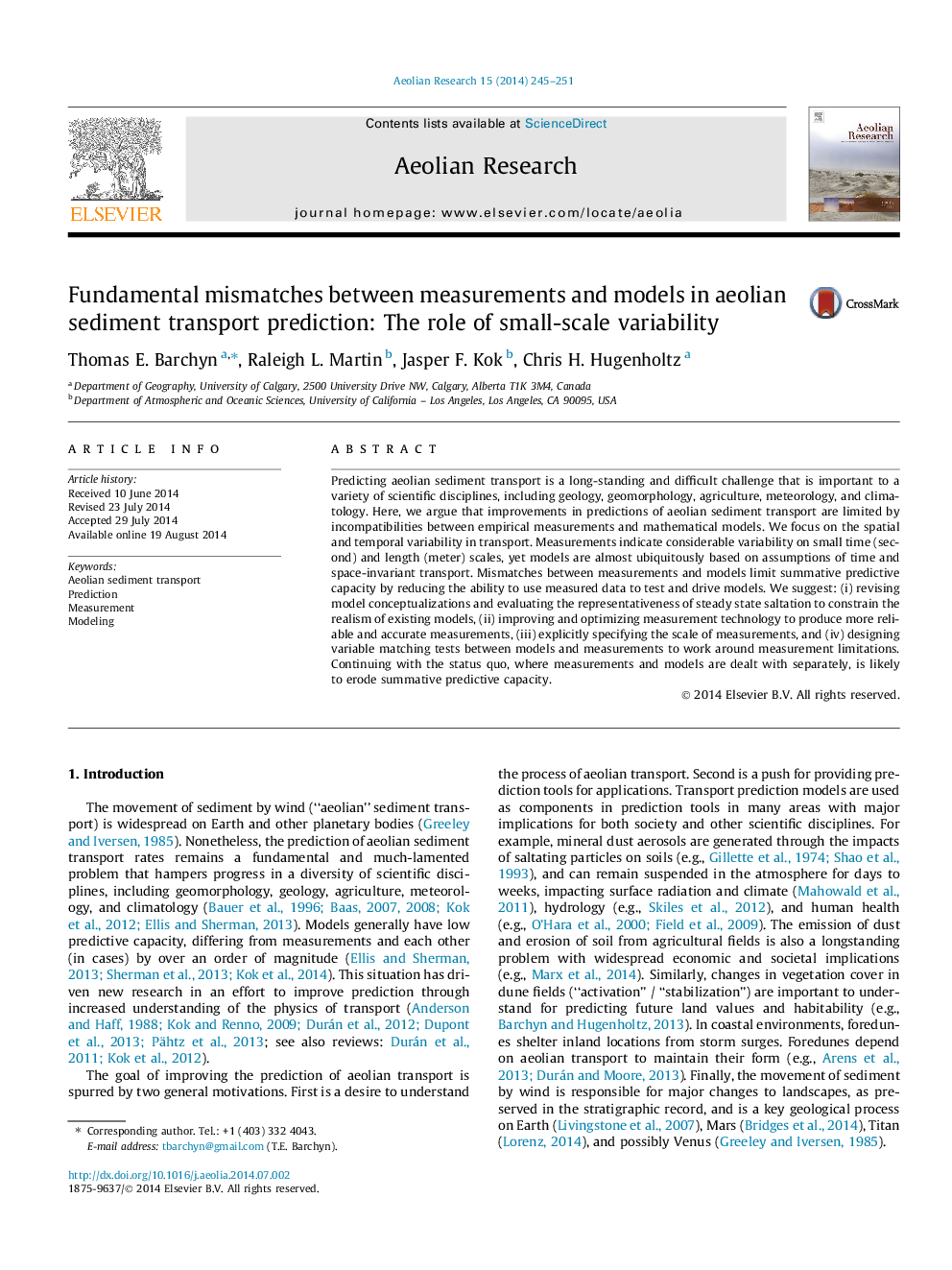| Article ID | Journal | Published Year | Pages | File Type |
|---|---|---|---|---|
| 6426369 | Aeolian Research | 2014 | 7 Pages |
â¢Mismatches between measurements and models limit the reliability of prediction.â¢Treatment of spatial and temporal variability is an acute area of mismatch.â¢We suggest modifications to both measurements and models to improve commensurability.
Predicting aeolian sediment transport is a long-standing and difficult challenge that is important to a variety of scientific disciplines, including geology, geomorphology, agriculture, meteorology, and climatology. Here, we argue that improvements in predictions of aeolian sediment transport are limited by incompatibilities between empirical measurements and mathematical models. We focus on the spatial and temporal variability in transport. Measurements indicate considerable variability on small time (second) and length (meter) scales, yet models are almost ubiquitously based on assumptions of time and space-invariant transport. Mismatches between measurements and models limit summative predictive capacity by reducing the ability to use measured data to test and drive models. We suggest: (i) revising model conceptualizations and evaluating the representativeness of steady state saltation to constrain the realism of existing models, (ii) improving and optimizing measurement technology to produce more reliable and accurate measurements, (iii) explicitly specifying the scale of measurements, and (iv) designing variable matching tests between models and measurements to work around measurement limitations. Continuing with the status quo, where measurements and models are dealt with separately, is likely to erode summative predictive capacity.
